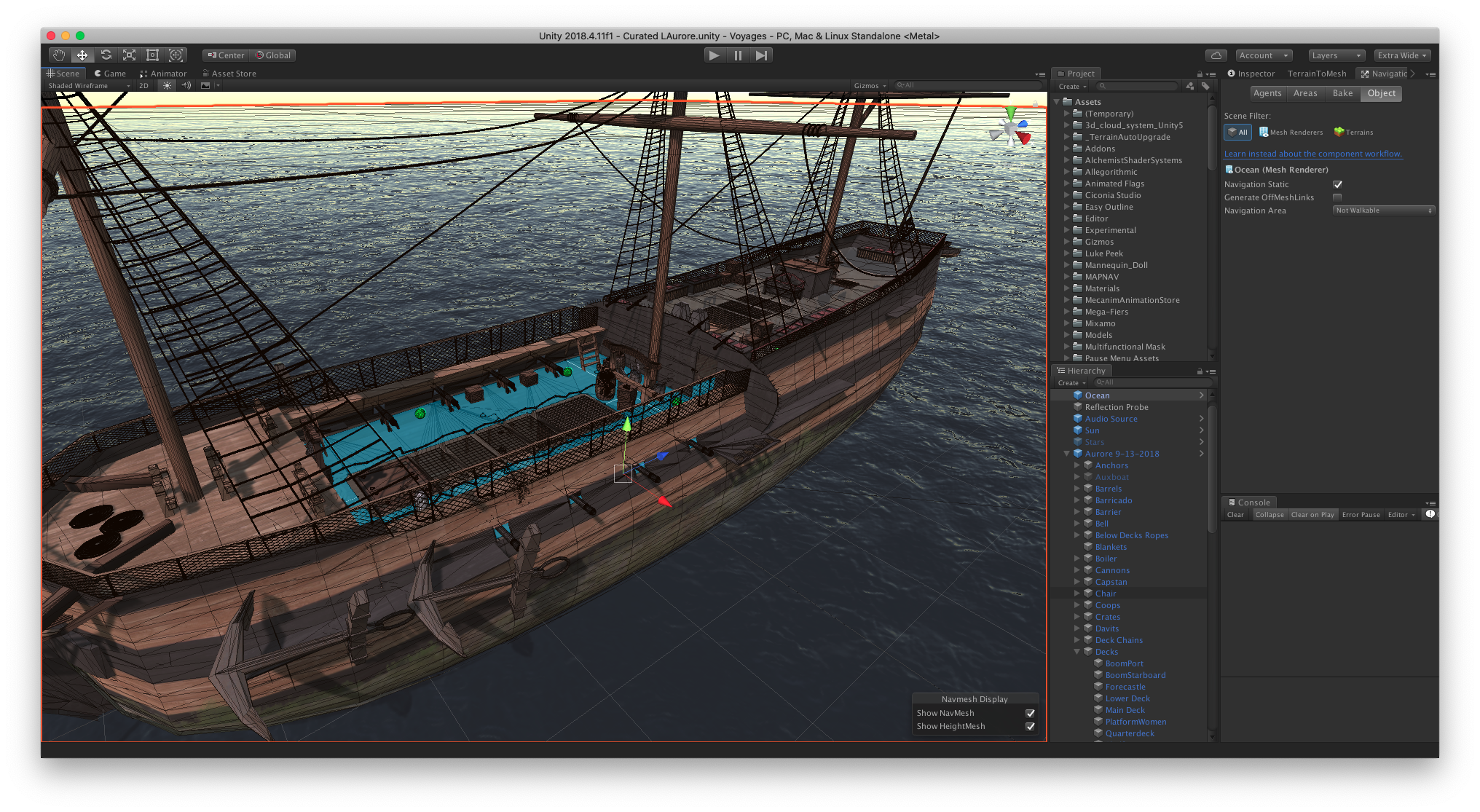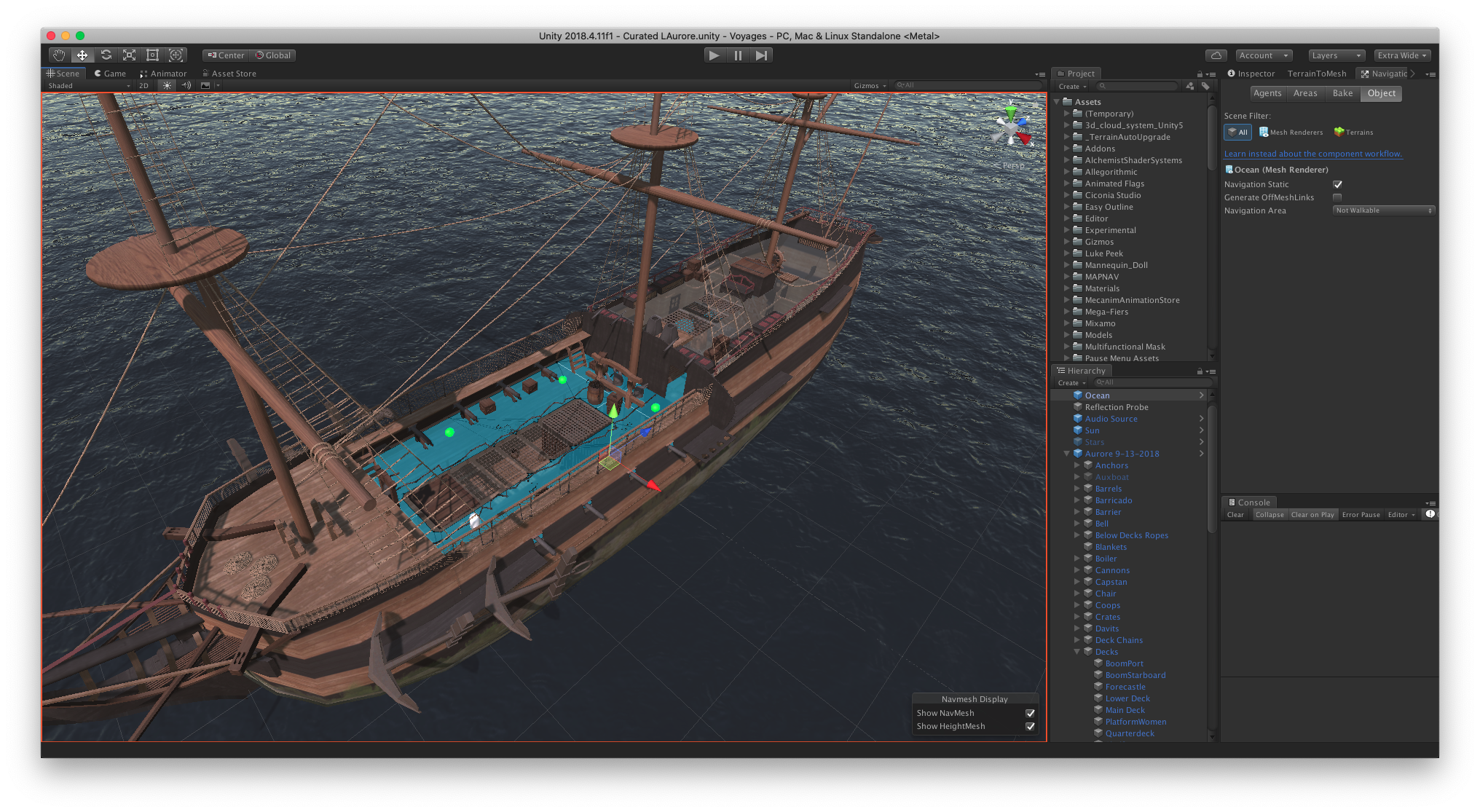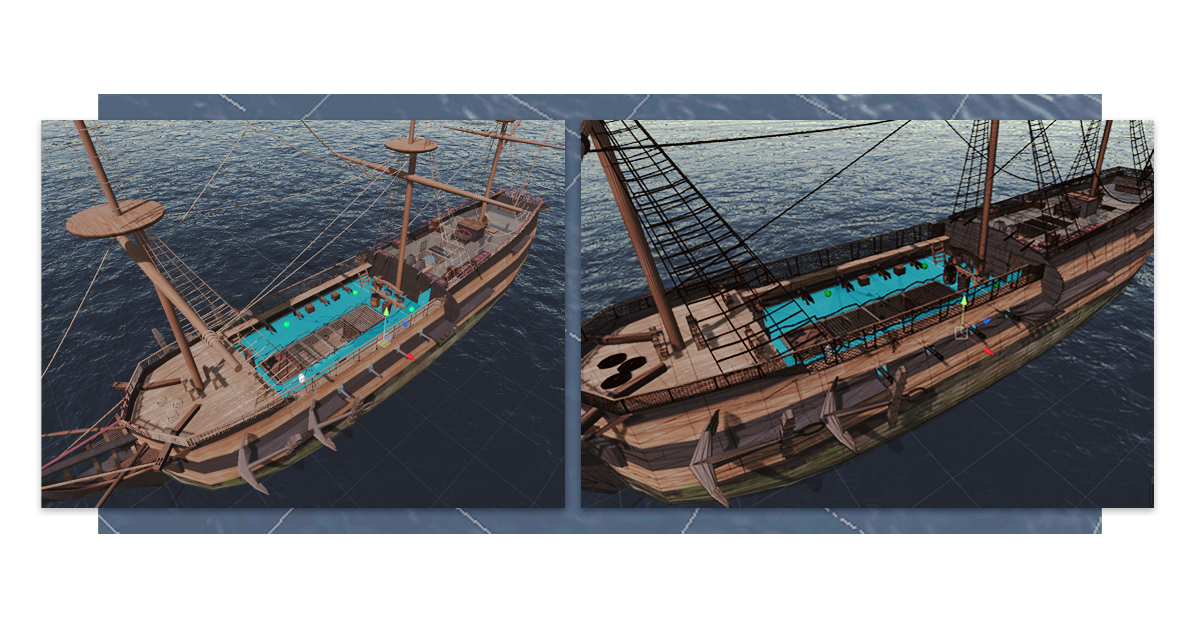In 2019, the Emory Center for Digital Scholarship (ECDS) created a 3D reconstruction of the slave vessel L’Aurore, featured in the “Slave Ship in 3D Video” for SlaveVoyages. This was and continues to be a significant educational resource for instructors, researchers, and students. As of today the video has been viewed over 102,000 times on Vimeo (now also available on YouTube) since its release. ECDS is now creating an explorative immersive application of the ship. The interactive build will include a curated walkthrough of the entire ship with voice annotation from slave trade historians and interactive artifacts from the slave vessel. Dr. Arya Basu, Visual Information Specialist at ECDS, has shared some details about his work on the project in progress, including a pair of screenshots and a short video clip.
Development plan:

To create the immersive 3D walkthrough, the project team are using a real-time game engine platform called Unity. Arya Basu is working to create a curated pathway that allows the user to explore onboard L’Aurore. This pathway will consist of several points-of-interest (POI) on the main deck as well as the quarter deck, with a collection of interactive artifacts from the slave vessel, meant to provide a glimpse of the Middle Passage for historical and educational purposes.
Courtesy of Arya Basu
The video clip above shows a work-in-progress prototype of how a user avatar (the white capsule) explores various POIs on the decks of L’Aurore. The demo starts with a third-person hovering camera that floats above the user avatar. The objective of the experience is to be able to navigate a set of POIs while exploring the interiors of the slave vessel. The next iteration of the development would involve crafting a user interface to let the user explore various Middle Passage artifacts that were part of L’Aurore.
Use of Artificial Intelligence:

The user will be able to navigate the ship with the help of an avatar. This avatar, designed by Arya, uses agent-based modeling (ABM) to be aware of all the navigable surfaces of the L’Aurore. Eric Bonabeau writes that in ABM “a system is modeled as a collection of autonomous decision-making entities called agents. Each agent individually assesses its situation and makes decisions on the basis of a set of rules.”[1] In the case of the L’Aurore, this situation is one in which a singular agent assists the user’s navigation of the ship.
This singular agent has a rule-based interaction model which would keep the user on-script, a critical step in ensuring the scholarly integrity of this interactive exploration. It is important to note that historically on a slave vessel like L’Aurore, enslaved persons’ navigation of the ship was highly restricted. Therefore, one must be careful in choosing the appropriate navigation metaphors, due to the sensitive nature of the subject matter dealing with such horrific human plight.
Dr. David Eltis, Robert W. Woodruff Professor Emeritus of History at Emory University, explains that the original 3D video reconstruction of L’Aurore was unique because 1) it drew on the original eighteenth century plans of a slave vessel taken from the archives, and 2) it gave the user fly-throughs of the vessel together with close-ups of items of particular importance. The addition of the curated pathway feature in the interactive build will allow viewers to appreciate the on-board conditions that captives experienced that no pictures or text by themselves could communicate. Despite this, it is the future possibilities of user-controlled navigation that the team finds most exciting; to give the viewer full command of the camera is the ultimate target.
The work on this interactive build is still in progress and as such the images/video included here may not match the final representation; we hope to share more updates on the blog as the project develops further.
To learn more about SlaveVoyages, please visit the website at: https://www.slavevoyages.org/
[1] Bonabeau, Eric. “Agent-Based Modeling: Methods and Techniques for Simulating Human Systems.” Proceedings of the National Academy of Sciences, vol. 99, no. suppl 3, National Academy of Sciences, May 2002, pp. 7280–87. www.pnas.org, doi:10.1073/pnas.082080899.
